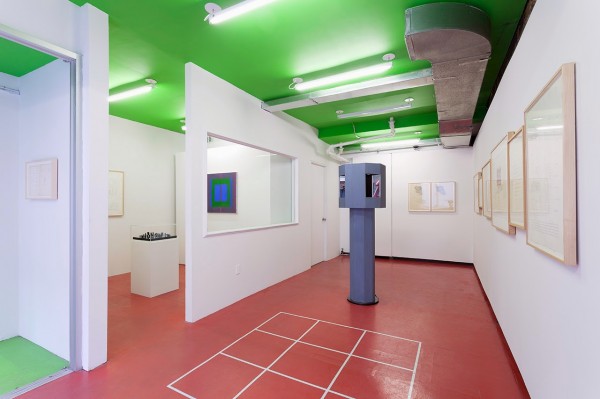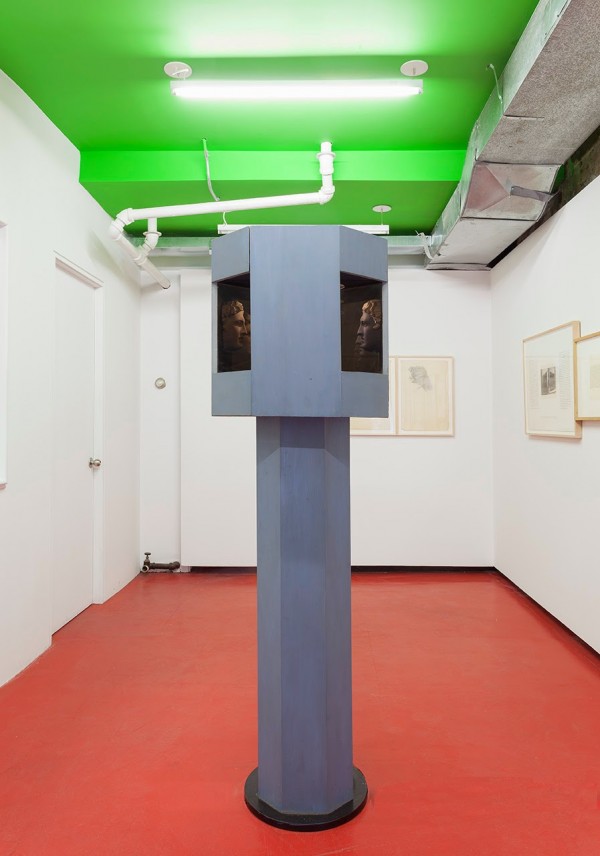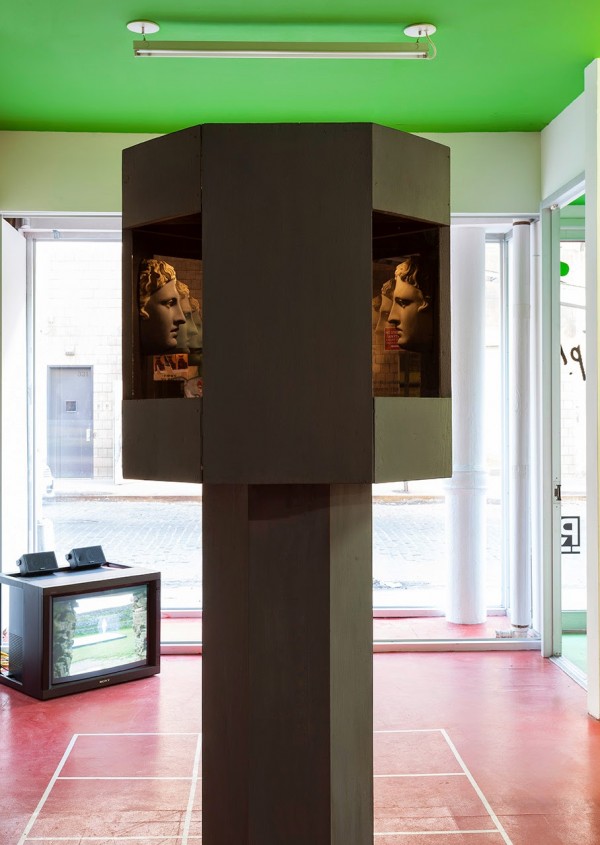Brian O’Doherty
Tuesday, 1 April 2014




Brian O’Doherty
Work from P! at Simone Subal Gallery, New York.
“Attempting to trace Brian O’Doherty’s artistic concerns through his seven decade career is akin to falling down a rabbit hole. This would undoubtedly please the artist, who delights in the type of misdirection that aims at inspiring deeper thought. His output includes mazelike grids (Vowel Grid, 1970) among other labyrinths-inspired imagery like his rope drawings (notably Rope Drawing #120: Here and Now, 2014) in which warrens of colored segments are teased by ropes in three dimensions to create masterful parallaxes.
These works, on view as part of a joint exhibition presented by P! and Simone Subal, demonstrate the continuing currency of O’Doherty’s thinking. AOU, The Broad Vowels, 2005, comes from the period he worked under the pseudonym Patrick Ireland, which he assumed between 1972 and 2008 in protest over the political situation in Ireland. Here, O’Doherty employs trompe l’oeil through color and line to illustrate how the eye can confuse, mislead, and obfuscate. Also depicted are painted shapes of the titular vowels, which come from Ogham, an ancient Celtic language written as dashes and lines and never spoken aloud, that emphasize his interest in delineating underlying visual patterns to describe systems of existence, thought, and communication.
For O’Doherty, beyond trick lies reason. Just as the artist’s “Inside the White Cube” essays—originally published in Artforum between 1976 and 1986—indicates how a gallery space is anything but neutral, these paired exhibitions enable a reading of O’Doherty that discusses ways of seeing beyond surfaces. A Geographical Notation on Equivalence and Multivalence of Meaning (Arse / Ass), 1965, describes the potential for glorious misunderstanding when attempting to communicate about sex in Ireland versus the United States—the different meanings of the words “tramp” and “bum” being a case in point. O’Doherty’s famous portrait of Marcel Duchamp as an electrocardiogram, Portrait of Marcel Duchamp, Lead 1, Slow Heartbeat, 1966, is shown here, too. As with Ogham, the heartbeat is unspoken—ultimately, however, what could be more fundamental to a person’s existence.” – Gemma Tipton, Artforum